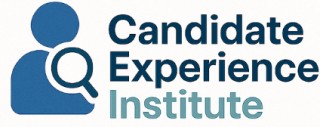
Understanding Employer Branding
Defining the Core of Employer Branding
Employer branding is more than just a buzzword in today's competitive job market; it's a strategic approach that shapes how a company is perceived by both current employees and potential candidates. At its core, employer branding is about creating a compelling employer image that resonates with job seekers and aligns with the organization's values and culture. This involves a blend of company culture, employee value proposition (EVP), and the overall work environment.
The Role of Company Culture and Values
A strong employer brand is deeply rooted in the company's culture and values. These elements are not just about what the company does, but how it does it. A positive work environment that promotes employee engagement and work-life balance is crucial. When employees feel valued and aligned with the company's mission, they become ambassadors of the brand, enhancing its appeal to top talent.
Building a Strong Employer Brand
To build a strong employer brand, companies need to focus on authenticity and consistency. This means communicating the company's values and culture clearly and consistently across all platforms, including social media and recruitment channels. It's about creating a narrative that potential candidates can relate to and aspire to be part of. For those interested in exploring opportunities in unique sectors, such as remote church positions, understanding the employer's brand can be a deciding factor.
Impact on Talent Acquisition
Employer branding plays a pivotal role in talent acquisition. A strong employer brand attracts top talent by differentiating the company from its competitors. It provides potential candidates with a clear picture of what it's like to work for the organization, helping them make informed decisions about their career paths. This connection between employer branding and candidate experience is crucial for attracting and retaining talent in the long term.
The Connection Between Employer Branding and Candidate Experience
Creating a Seamless Journey for Candidates
The connection between employer branding and candidate experience is profound and multifaceted. A strong employer brand not only attracts top talent but also ensures that potential candidates have a positive experience throughout the recruitment process. This relationship is crucial because a candidate's perception of a company can significantly influence their decision to join or recommend the organization to others.
Aligning Company Values with Candidate Expectations
One of the key aspects of employer branding is how well a company's values align with the expectations of job seekers. Candidates today are looking for more than just a job; they seek a work environment that resonates with their personal values and offers a compelling employer proposition. A company that effectively communicates its values and culture through its employer brand can create a strong connection with potential candidates, enhancing their overall experience.
The Role of Social Media and Online Presence
In today's digital age, social media plays a pivotal role in shaping a company's employer brand. Platforms like LinkedIn, Glassdoor, and even Instagram allow companies to showcase their culture, work environment, and employee engagement initiatives. A positive online presence can significantly enhance the candidate experience by providing insights into what it's like to work at the organization. This transparency helps build trust and sets realistic expectations for potential candidates.
Ensuring a Positive Recruitment Process
A strong employer brand is reflected in the recruitment process itself. From the initial job posting to the final interview, every touchpoint should be designed to provide a seamless and positive experience for candidates. This includes clear communication, timely feedback, and a respectful interview process. By prioritizing these elements, companies can ensure that their employer brand positively influences the candidate experience, ultimately leading to successful talent acquisition.
For more insights into how employer branding impacts candidate experience, you can explore opportunities in neonatology careers.
Strategies for Building a Strong Employer Brand
Effective Strategies for Enhancing Your Employer Identity
Building a compelling employer brand is crucial for attracting and retaining talent. Here are some strategies that companies should consider to establish a strong employer identity:- Clarity in Company Values: Clearly define and communicate the company values and mission. This aligns the organization’s goals with those of both current and potential candidates. A strong alignment ensures an authentic, congruent identity that attracts like-minded individuals.
- Create a Positive Work Culture: An attractive work environment is pivotal in drawing top talent. Fostering a positive work culture that emphasizes employee engagement, work-life balance, and respect can significantly enhance the company’s appeal.
- Develop a Strong EVP: An Employee Value Proposition (EVP) is central to employer branding. It must effectively convey what makes working at your company unique. This proposition should reflect what employees find valuable about their work life.
- Leverage Social Media and Digital Platforms: Utilizing social media enables businesses to showcase their culture and values widely. Sharing content that reflects the work environment helps shape candidates' perceptions, increasing chances of appealing to top talent.
- Highlight Employee Testimonials: Current employees’ experiences and testimonials can be influential. Showcasing authentic stories from employees on your website or navigating the role of an account coordinator can provide potential candidates with trustworthy insights.
- Maintain Consistent Communication: Clear and honest communication builds trust. This transparency is crucial throughout the recruitment process and beyond, contributing to a strong brand image and positive candidate experience.
Employer Branding's Role in Talent Attraction
Utilizing Employer Branding for Talent Attraction
In today's competitive job market, a compelling employer brand can act as a magnet for attracting top talent. Companies with a strong employer image not only project a positive work environment but also highlight their unique company culture and values, making them more appealing to potential candidates. By focusing on an organization's core values and employee experience, businesses can effectively showcase their commitment to a balanced work-life environment and employee well-being, thereby enhancing their appeal among job seekers.
Candidates today are not just interested in salary packages but also place a strong emphasis on the overall work environment and the company culture they will be part of. Thus, having a clear and strong employer value proposition (EVP) that communicates the benefits of working at your organization is crucial. It enables potential employees to visualize themselves within your company framework, aligning with your mission and vision.
Moreover, with the rise of social media, companies have unprecedented opportunities to convey their branding message to a larger audience. By maintaining an active online presence, organizations can reach potential candidates directly and engage with them, creating a sense of community even before they join as employees. Sharing stories of employee engagement, success, and celebrating company milestones on platforms such as LinkedIn, Facebook, and Instagram can further enhance the perception of a strong, employee-centric brand.
The role of employer branding goes beyond just attracting talent; it also lays the foundation for future recruitment campaigns. By establishing a solid reputation as a positive and engaging work environment, organizations can ensure a steady pipeline of interested candidates, ready to be approached for future job openings.
Retaining Talent Through Employer Branding
Leveraging Employer Branding to Retain Top Talent
Retaining talent is essential for ensuring long-term success and maintaining a positive company culture. A strong employer brand plays a significant role in employee retention by fostering a work environment that is aligned with the values and expectations of both the company and its employees. When a company's employer branding is well communicated and honest, it resonates on a deeper level with employees. This alignment with company values and culture contributes to employee satisfaction and encourages a sense of belonging, ultimately reducing turnover rates.- Employee Value Proposition (EVP): A compelling employer brand communicates a clear EVP that highlights the organization's strengths and uniqueness. This ensures that employees feel valued and understand their role within the broader company mission.
- Positive Work Environment: Cultivating a positive work environment is pivotal in maintaining employee engagement and satisfaction. By promoting a strong employer branding message, companies can set expectations for a supportive and inclusive culture.
- Work-Life Balance: Companies known for facilitating a balanced work-life environment attract and retain talent by reducing burnout and improving overall employee satisfaction.
- Social Media and Company Communication: Employers who effectively utilize social media to highlight their company culture and acts of employee engagement, boost morale and foster trust among current employees.
- Real Alignment: Ensuring that the brand messaging aligns with actual employee experiences consolidates trust. Employees are more likely to remain with an employer that delivers on its promises.
Measuring the Success of Employer Branding Initiatives
Assessing the Effectiveness of Employer Branding Efforts
To ensure the success of your employer branding initiatives, it is crucial to implement a robust measurement strategy. This will help determine how these efforts influence talent attraction, retention, and overall company culture. Below are some key metrics and methods to evaluate the impact of a strong employer brand:- Employee Engagement Levels: Gauging employee engagement is essential, as it reflects how well employees resonate with the company's values and work environment. Surveys and feedback mechanisms can provide insights into the organizational culture and employee satisfaction.
- Candidate Quality and Quantity: Tracking the number and quality of candidates applying for positions can offer a direct measure of your employer branding. An increase in top talent applicants suggests a compelling employer proposition.
- Retention Rates: High employee retention indicates a positive work culture and effective employer brand. Monitoring voluntary turnover rates can reveal how well employees integrate with the company's mission and values.
- Social Media Engagement: Analyzing social media interactions provides a window into public perceptions of your employer brand. Positive sentiments and active engagement can signal a strong brand presence.













